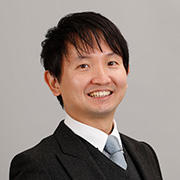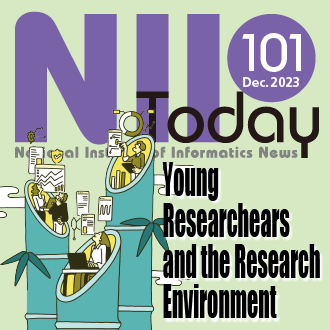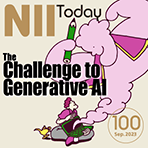Research
Information Systems Architecture Science Research Division
 TEI Kenji
TEI KenjiInformation Systems Architecture Science Research Division Associate Professor
Research Fields: Software Engineering
Detail: http://researchmap.jp/teikenji/
Introduction of research by science writer
Developing systems that apply state-of-the-art technologies to everyday life
Ecological systems that increase living convenience
Most of us know about systems that use sensors to switch on lights automatically when people approach. Such a real-world aware system will more proactively support our daily life. Wireless sensor networks advance these sensor technologies still further to provide even more sophisticated functions. These networks collect information about the real world from a network of multiple sensor nodes--small computers with built-in sensors--installed across wide areas. Wireless sensor networks have various potential applications. They can be used, for example, to develop systems that maintain a lookout for forest fires, since sensor nodes can be installed in remote locations difficult to reach or inspect by humans. They can also be used to develop systems that guide people in selecting optimal evacuation routes in the event of a disaster, detecting conditions that change hourly or by the minute.
Wireless sensor networks offering such highly convenient functions will inevitably pose challenges. Each individual sensor node needs to be relatively cheap. That rules out large memory capacity or expensive CPUs. Their batteries need to hold a charge for as long as possible. My research addresses the resource efficiency problem and is tackling several themes: optimal routes for transmitting gathered data between sensor nodes; ways to communicate externally from sensor nodes; and minimizing transmitted data volumes without sacrificing accuracy. In short, how to achieve the most ecological and highly reliable systems in the wireless sensor networks subject to these various constraints.
Toward a world in which computers understand and take part in the real world
I believe wireless sensor networks will form the foundations of next-generation computer systems that increase the convenience of our lives. This is because these networks can communicate information about the world to computers.
Traditional computer systems give relatively little consideration to the physical environments in which we, the users, act. But using wireless sensor networks, computers can sense the conditions that surround the user. Such systems could automatically fine-tune environments for specific users--for example, raising the volume on the TV or nudging up the room temperature when grandpa enters the living room. Such functionality would confer the benefits of information technology even to members of generations relatively unfamiliar with computers.
Systems capable of grasping user surroundings and providing more proactive support for their lives are expected to serve as next-generation systems in various fields. But to build these systems, we need to find ways to get the specialists in these various fields and technical specialists to work even more closely than in traditional systems integration efforts. My plan is to move forward with research to improve information efficiency under conditions of tighter resource constraints, assessing how best to deploy multiple functions--for example, intruder detection, air-conditioning control, and emergency guidance--on a single network. In partnerships with specialists from various fields, I want to integrate these efforts with efforts in practical systems integration. I also plan to pursue research on development methods to identify the most efficient way to develop software for these wireless sensor networks.

 Summary of NII 2024
Summary of NII 2024 NII Today No.101(EN)
NII Today No.101(EN) SINETStream Use Case: Mobile Animal Laboratory [Bio-Innovation Research Center, Tokushima Univ.]
SINETStream Use Case: Mobile Animal Laboratory [Bio-Innovation Research Center, Tokushima Univ.] NII Today No.100(EN)
NII Today No.100(EN) Guidance of Informatics Program, SOKENDAI 23-24
Guidance of Informatics Program, SOKENDAI 23-24 The National Institute of Information Basic Principles of Respect for LGBTQ
The National Institute of Information Basic Principles of Respect for LGBTQ DAAD
DAAD